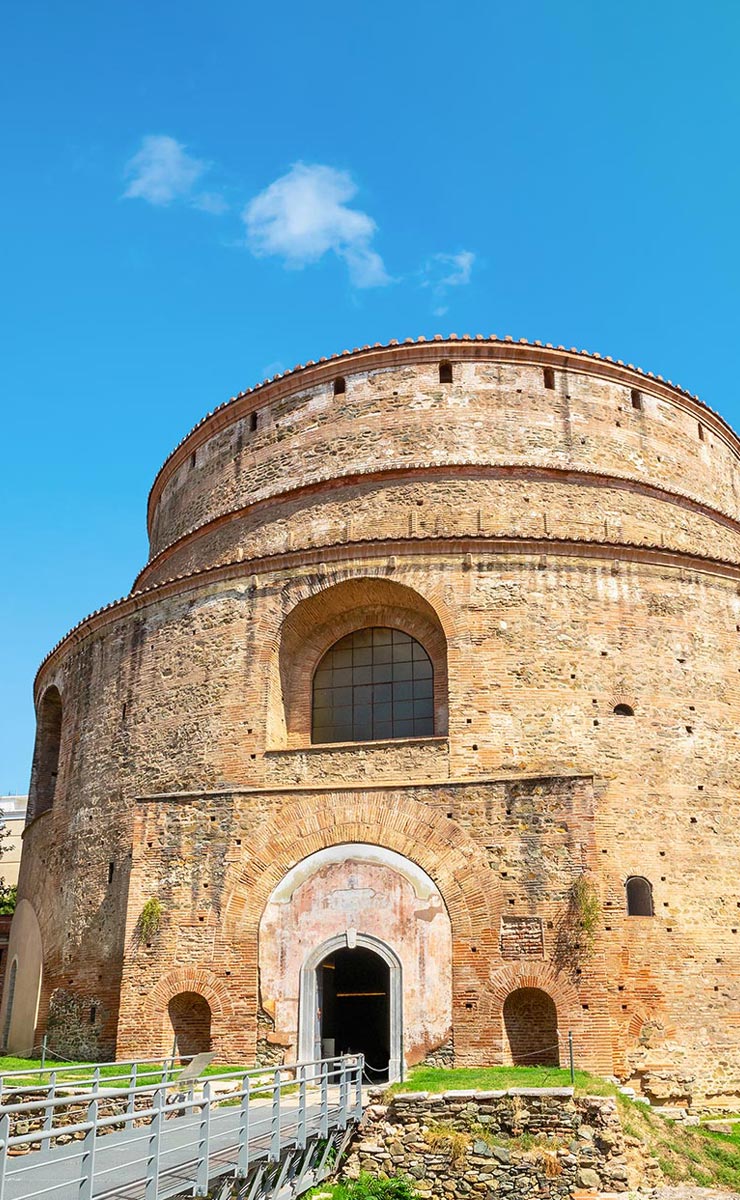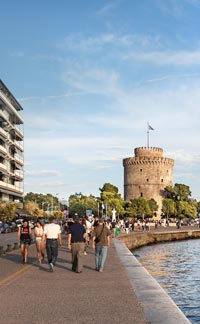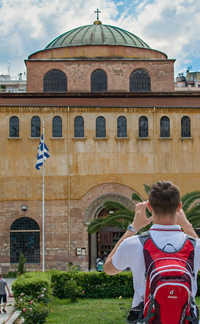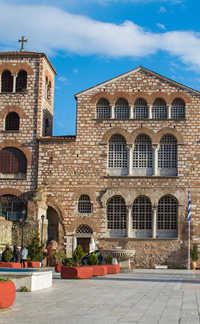The Rotunda stands as one of the oldest and most iconic structures in Thessaloniki — a massive, circular building that has served vastly different roles over the centuries. Located just steps away from the Arch of Galerius, it is a must-see for anyone interested in the city’s layered history.
A Building for Emperors, Saints, and Sultans
Commissioned by Roman Emperor Galerius around 306 AD, the Rotunda was likely intended as his mausoleum or as a pagan temple. However, it was never used for its original purpose. Instead, it was later converted into a Christian church during the Byzantine era, known as the Church of Saint George. When the Ottomans took control of Thessaloniki, it was transformed into a mosque, and a slender minaret — still standing today — was added beside it.
Architectural Marvel and Artistic Treasure
With its 6-meter-thick walls and a 30-meter-high dome, the Rotunda has withstood earthquakes, invasions, and time itself. Inside, visitors can admire early Christian mosaics that still cling to the curved walls and dome. These golden mosaics, dating from the 4th to 6th centuries, depict angelic and floral figures, offering a glimpse into early Byzantine artistry and spirituality.
The building’s unique combination of Roman architecture, Byzantine religious imagery, and Ottoman influence makes it a powerful symbol of Thessaloniki’s multicultural past.
A Living Monument
Today, the Rotunda functions as a museum and occasional place of worship. It’s part of the city’s UNESCO World Heritage-listed Paleochristian and Byzantine Monuments and continues to attract visitors seeking beauty, history, and spiritual resonance in one of Greece’s most ancient cities.
Whether you're a history enthusiast, an art lover, or simply a curious traveler, the Rotunda is a stunning stop that tells the story of Thessaloniki like no other.


















